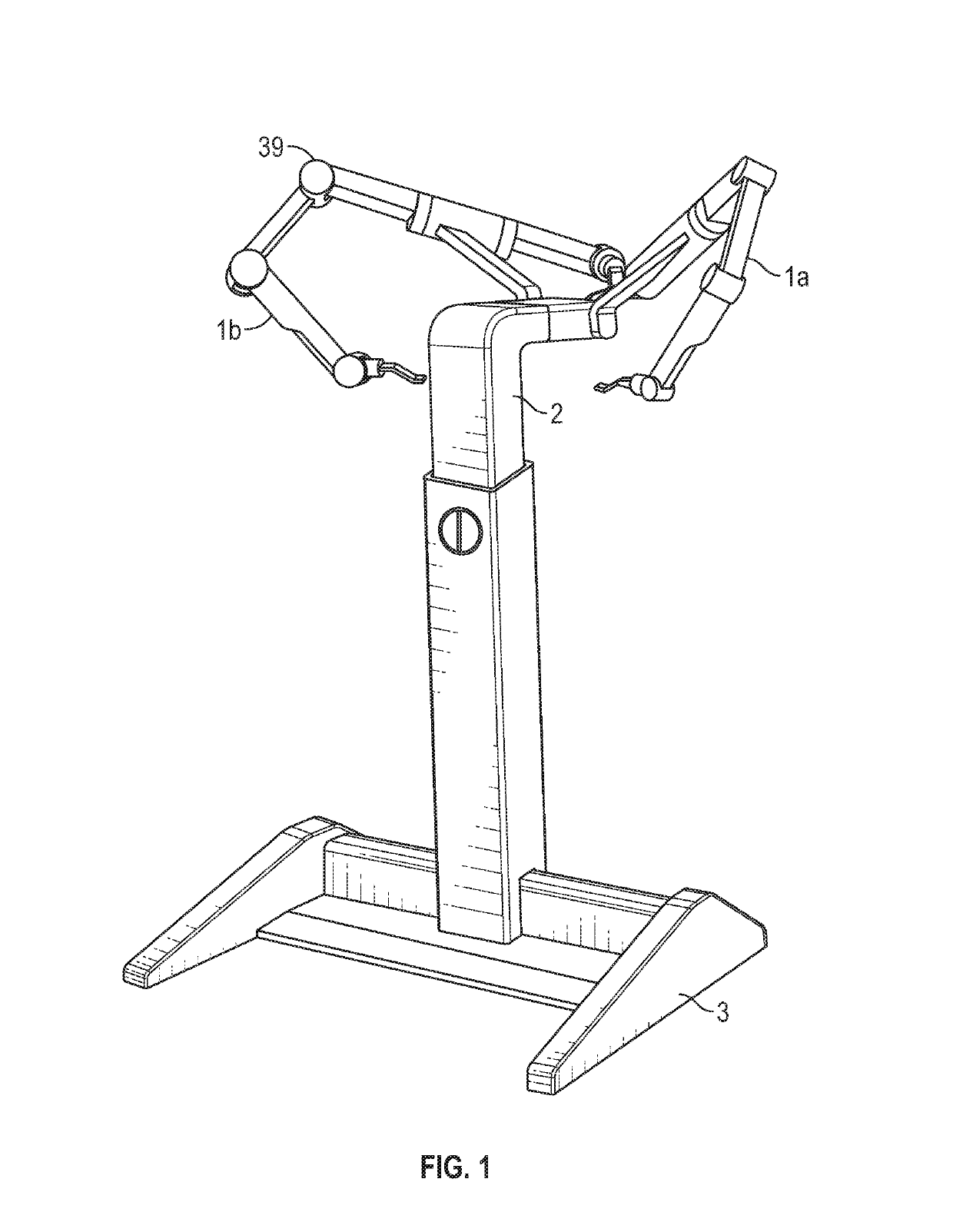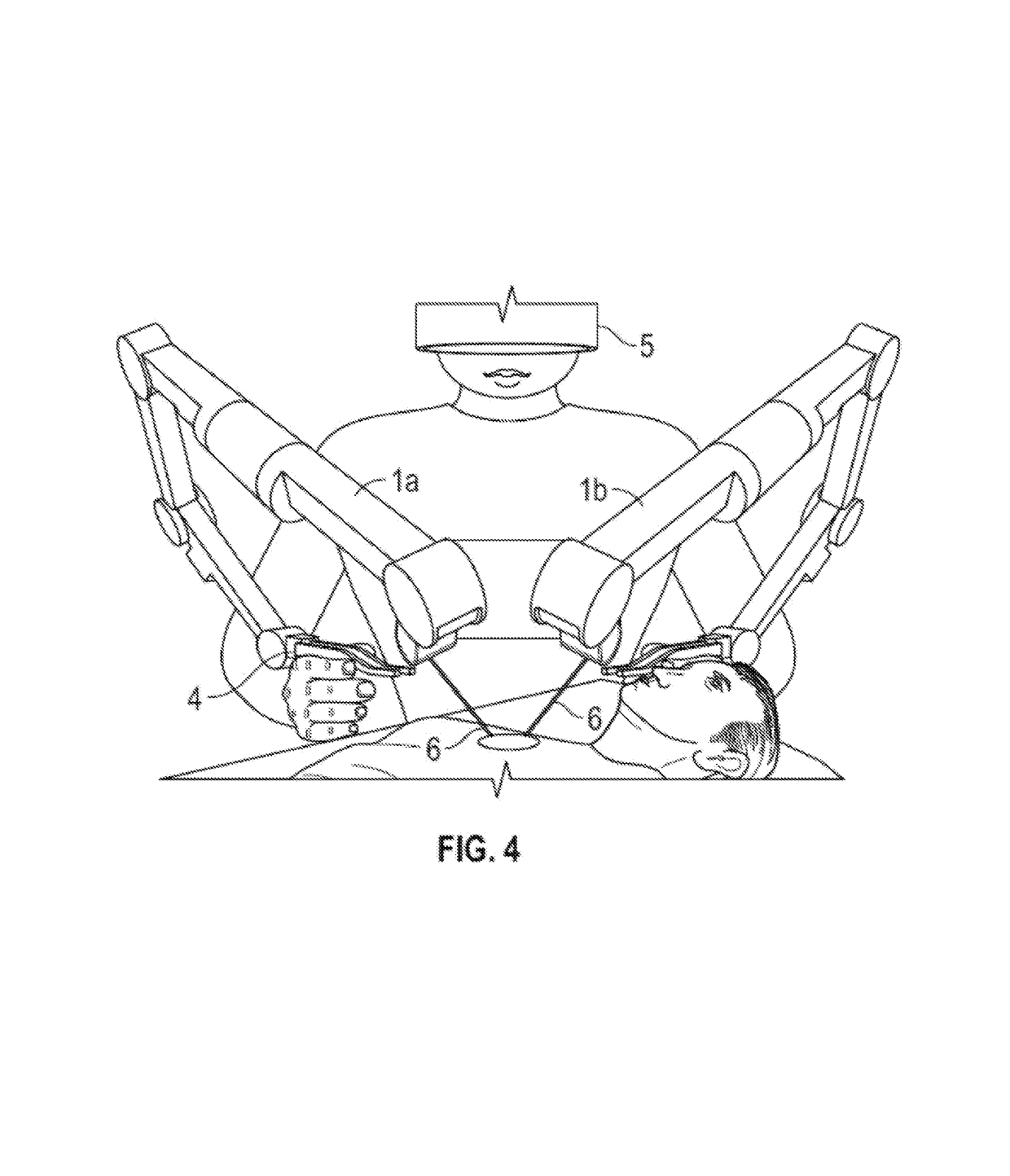Surgical system for microsurgical techniques
a microsurgical and surgical technology, applied in the field of surgical equipment, can solve the problems of inability to achieve optimal arm and hand posture, inability to see, restricted surgical area, etc., and achieve the effects of convenient removal, improved accuracy, and improved safety
- Summary
- Abstract
- Description
- Claims
- Application Information
AI Technical Summary
Benefits of technology
Problems solved by technology
Method used
Image
Examples
Embodiment Construction
[0042]A surgical system for microsurgical techniques, constructed in accordance with a preferred embodiment of the present invention, is described herein, and is seen generally in FIGS. 3 and 4. This system includes preferably two identical mechanical telemanipulators 1a, 1b configured to be operated independently from the other, and a surgical microscope 5 through which the surgeon can have a magnified view of the surgical area, being able to perform microsurgical techniques. While the present embodiment of the inventive system is shown with a surgical microscope, the skilled person will understand that other magnification optics are possible, such as surgical loupes. In certain applications, use of the naked eye for visualization will also be possible.
[0043]According to FIGS. 1 and 2, the two mechanical telemanipulators 1a, 1b are respectively mounted on an articulated structure 2 so that the angles between them and the patient can be tuned and they can be accurately positioned. T...
PUM
 Login to View More
Login to View More Abstract
Description
Claims
Application Information
 Login to View More
Login to View More - R&D
- Intellectual Property
- Life Sciences
- Materials
- Tech Scout
- Unparalleled Data Quality
- Higher Quality Content
- 60% Fewer Hallucinations
Browse by: Latest US Patents, China's latest patents, Technical Efficacy Thesaurus, Application Domain, Technology Topic, Popular Technical Reports.
© 2025 PatSnap. All rights reserved.Legal|Privacy policy|Modern Slavery Act Transparency Statement|Sitemap|About US| Contact US: help@patsnap.com



